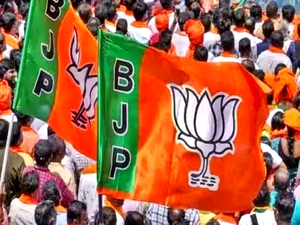I n what appears to be a pro-incumbency mandate, the Mahayuti coalition led by the BJP swept the Maharashtra Assembly poll, while the Jharkhand Mukti Morcha (JMM) led alliance retained power in Jharkhand. The two elections, noted for their use of blatantly polarising slogans such as “batenge toh katenge” and “ek hain toh safe hai” by the BJP-led coalition, have lessons for both the ruling and the Opposition camps. Maharashtra, known for its murky, multi-party politics, saw a stunning reversal of fortunes in a matter of five months since the Lok Sabha polls when the INDIA bloc’s Maha Vikas Aghadi (MVA) had scored a significant lead over the Mahayuti comprising the BJP, the Eknath Shinde-led Shiv Sena and the Ajit Pawar-led NCP.
What changed in the course of these five months holds the key to understanding this election as the state has been reeling under an agrarian crisis with farmers struggling to get commensurate price for their produce. At the same time, Maharashtra has been losing industrial projects, one after another, to neighbouring Gujarat. While the results have come as a shot in the arm for the BJP which has been accused of splitting two major political parties in the state, the outcome serves as a moment of reckoning for the Congress. In Jharkhand, the grand old party has been reduced to a distant junior partner of the JMM in terms of seats. The loss of a significant state like Maharashtra, coming on top of the setback in Haryana, is expected to diminish the Congress’ overall bargaining power in the current landscape of coalition politics as the party has been constantly losing political space to its alliance partners in most states.
The Maharashtra results also raise questions on the political future of Maratha strongman Sharad Pawar and Uddhav Thackeray, who have already lost their party names and symbols. At the same time, the Mahayuti’s landslide reinforces the BJP’s dominant position within the alliance. It also makes the chances of the party’s biggest leader in the state Devendra Fadnavis returning as the chief minister quite possible.
In Jharkhand, Chief Minister Hemant Soren, out on bail in a money-laundering case, spearheaded a campaign that emphasised his government’s welfare initiatives. He also capitalised on public sympathy over the Centre’s alleged conspiracy against him. Conversely, the BJP struggled to wrest the mineral-rich state from the INDIA bloc, despite vigorous campaigning by prominent leaders like Prime Minister Narendra Modi and Union Home Minister Amit Shah among others. This setback was primarily due to the NDA’s failure to present a chief ministerial candidate, as their campaign largely revolved around issues such as “infiltration from Bangladesh.” This once again proves that it is the bread and butter issues that matter the most in state elections. Another reason that could have possibly led to the incumbents retaining power in both states is the women-centric schemes launched by their governments in the run-up to the elections. Both states experienced an increase in female voter turnout in the elections. In Maharashtra, the Mahayuti government introduced the Ladki Bahin Yojana in August, which offers Rs 1,500 per month to women from families earning less than Rs 2.5 lakh annually. Chief Minister Eknath Shinde later announced an increase in this assistance to Rs 2,100. The scheme benefitted 25 million women, primarily from lower middle-class, and to a lesser extent, middle-class women, who received funds directly in their bank accounts. This financial support empowered women, shifting the balance of power in favour of the Mahayuti. Likewise, the Jharkhand government launched the ‘Maiya Samman scheme’ in August, which seems to have influenced women voters in favour of the JMM. This initiative provides financial support of Rs 1,000 per month to women aged 21 to 50, benefitting approximately five million women across the state. Whether the parties learn their lessons from these results will become clear when Delhi votes in a few months from now.
